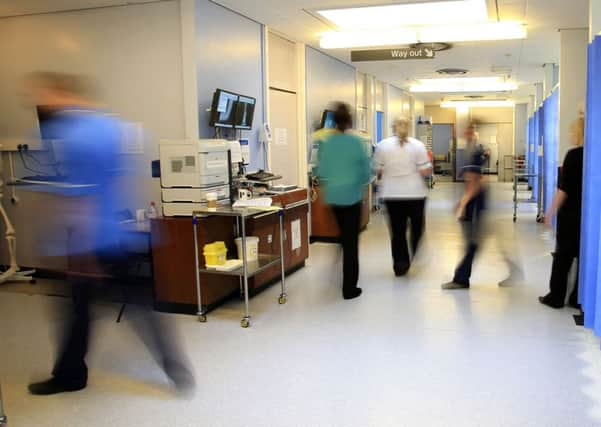More hospitals needed to cope with '˜tsunami' of A&E patients


A conference on the problems facing accident and emergency care was told that the NHS has reached a “tipping point” where it cannot close any more beds.
NHS England medical director Professor Sir Bruce Keogh also highlighted the rising tide of patients going to A&E.
Advertisement
Hide AdAdvertisement
Hide Ad“Over the last decade the number of people visiting our accident and emergency departments has grown from 18.8 million a year to nearly 23 million a year - a 22% increase,” Sir Bruce said.
He added: “We need to improve the offer for people out of hospitals, in order to alleviate some of the tsunami of people attending A&E, because the lights are on and because they know they’ll get a good deal there, and because they will leave within four hours.”
Dr Chris Moulton, vice president of the Royal College of Emergency Medicine, said: “If you want to look at the demographic growth of the country, we have got a bigger population because of immigration, we have got more elderly, we have got increased birth rate, and a lot of people living longer, so with the demographic change of the country you don’t have to be an arithmetic genius to say ‘If you’ve got a 10 per cent bigger country, we need 10 per cent more hospitals’.
With getting on for 200 district general hospitals, that equated to another 20 hospitals, he said.
Advertisement
Hide AdAdvertisement
Hide AdThe alternative to increasing the number of hospitals was solving “flow” problems in hospitals, but the issue had not been successfully tackled in more than two decades.
The calls for more beds came as Health Secretary Jeremy Hunt came under pressure from MPs to stop hospitals discharging patients in the middle of the night unless they specifically want to.
The Public Administration and Constitutional Affairs Committee was responding to a report in May from the Parliamentary and Health Service Ombudsman which detailed how frail and elderly patients are being discharged while still unwell or unable to cope.
In one case a woman in her 80s was discharged to an empty house, in a confused state with a catheter still in place. Another woman, a grandmother in her late 90s, collapsed and died in her granddaughter’s arms after being discharged from hospital too soon. The PHSO saw a 36 per cent rise in discharge-related investigations in 2015.
Advertisement
Hide AdAdvertisement
Hide AdThe MPs said: “We agree with the Alzheimer’s Society that night discharges are potentially dangerous for patients, and detrimental to their carers and relatives. Whilst we are aware than an outright ban on night discharges might have unintended consequences, the Secretary of State must set out, in the Government’s response to this report, how he intends to ensure that only those who want to be are discharged between 11pm and 6am.”
Janet Morrison, chief executive of the charity Independent Age, said: “This report paints a damning picture of the management of hospital discharge across many parts of the NHS. We are consistently seeing record numbers of people being kept in hospital unnecessarily because appropriate care services have not been put in place. Elsewhere, the worrying “revolving door” approach means people are being rushed out of hospital too soon as the race to find beds takes priority over patients’ needs. Sadly, frail patients who weren’t even ready to leave only find they end up back in hospital again.”